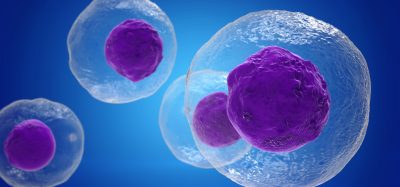Scientists discover how strep bacterium hides from the immune system
Posted: 3 December 2019 | Rachael Harper (Drug Target Review) | No comments yet
Produced by Group A Streptococcus, researchers have discovered the S protein, which binds to the red blood cell membrane to avoid being destroyed by immune cells and could be a target for anti-virulence drugs.


Researchers from the University of California, US have discovered that the bacterial pathogen that causes strep throat and other illnesses cloaks itself in fragments of red blood cells to evade detection by the host immune system.
They found that Group A Streptococcus (GAS) produces the S protein, which binds to the red blood cell membrane to avoid being engulfed and destroyed by phagocytic immune cells. By arming GAS with this form of immune camouflage, S protein enhances bacterial virulence and decreases survival in infected mice.
“Our study describes a completely novel mechanism for immune evasion,” said corresponding author David Gonzalez. “We believe the discovery of this previously overlooked virulence factor, S protein, has broad implications for development of countermeasures against GAS.”
GAS is a human-specific pathogen that can cause many different infections including strep throat, scarlet fever, impetigo, toxic shock syndrome and flesh-eating disease.
Gonzalez and co-first authors Igor Wierzbicki and Anaamika Campeau, used a nanotechnology-based technique called biomimetic virulomics to identify proteins that are secreted by GAS and bind to red blood cells. This approach revealed the S protein (named as such because it is limited to members of the Streptococcus genus).
The researchers found that a mutant bacterial strain lacking S protein was less able to grow in human blood and less able to bind to red blood cells, compared to the non-mutated strain. The mutant strain was also more readily captured and killed by the phagocytic immune cells, macrophages and neutrophils.
The absence of S protein also reshaped the bacterial protein landscape, decreasing the abundance of many known virulence factors.
Moreover, mice infected with GAS cells coated with red blood cells showed a 90 percent mortality rate, compared to 40 percent of mice infected with uncoated GAS cells. Infection with coated GAS cells also caused a more rapid decrease in body weight. “These findings suggest that S protein co-opts red blood cell membranes for molecular mimicry or imitation of host molecules, to evade the immune response,” Gonzalez said.
Additional experiments showed that infection with GAS caused a progressive decline in the body weight of mice and a 90 percent mortality rate, while all mice infected with mutant GAS lacking S protein survived infection and their body weight stabilised. Infection with mutant GAS also resulted in a lower concentration of bacteria in the bloodstream and organs and promoted a robust immune response and immunological memory.
The findings could lead to the development of a novel vaccine candidate”
“Taken together, the results suggest that inactivation of S protein function makes GAS vulnerable to host immunity,” Gonzalez explained. “S protein influences virulence by capturing lysed red blood cell membranes to cloak the bacterial cell surface, which allows bacteria to circumvent host immunity. This novel evasion mechanism can be targeted for anti-streptococcal therapies.
“Ultimately, the findings could lead to the development of a novel vaccine candidate. Because of its pivotal roles in pathogenesis and immune evasion and its conserved nature in Streptococci, S protein shows promising clinical potential as a target for the development of anti-virulence pharmacological interventions.”
The study was published in Cell Reports.
Related topics
Immunology, Nanotechnology, Protein, Research & Development, Targets, Vaccine
Related conditions
Group A Streptococcus
Related organisations
University of California (UC)
Related people
Anaamika Campeau, David Gonzalez, Igor Wierzbicki








